When you think about flowers that look spectacular and smell very nice, jasmines are a 100% match. Talking about jasmine, we mostly think about one particular variety of Jasminum officinale. Get instant help online with our flower plant identifier to recognize many more different types of Jasmine plants – all of them have a great decorative value. And in this article, we gathered the most popular Jasmine species!
List of Top-Notch Jasmine Varieties - Vines & Shrubs
Turns out that Jasmine genus has a plenty of interesting species that can be grown in any garden. Our favorites include the following cultivars!
Common Jasmine
Botanical Name: Jasminum officinale
Flower Colors: white
Light Requirements: full sun to partial shade
Blooming Season: June-August
Size: 15-30 ft
When you think about jasmine, the common Jasmine is that one variety that immediately comes to mind! This plant is widely appreciated due to its fragrance. It has other names like Poet's Jasmine, True Jasmine, or Summer Jasmine. This plant was often mentioned in the literature, for example, in Boccaccio's 'Decameron,' so the name of the 'Poet's Jasmine’ is fully justified. Common Jasmine is versatile and unproblematic. You can place it even in the shade. Still, it thrives in the full sun.
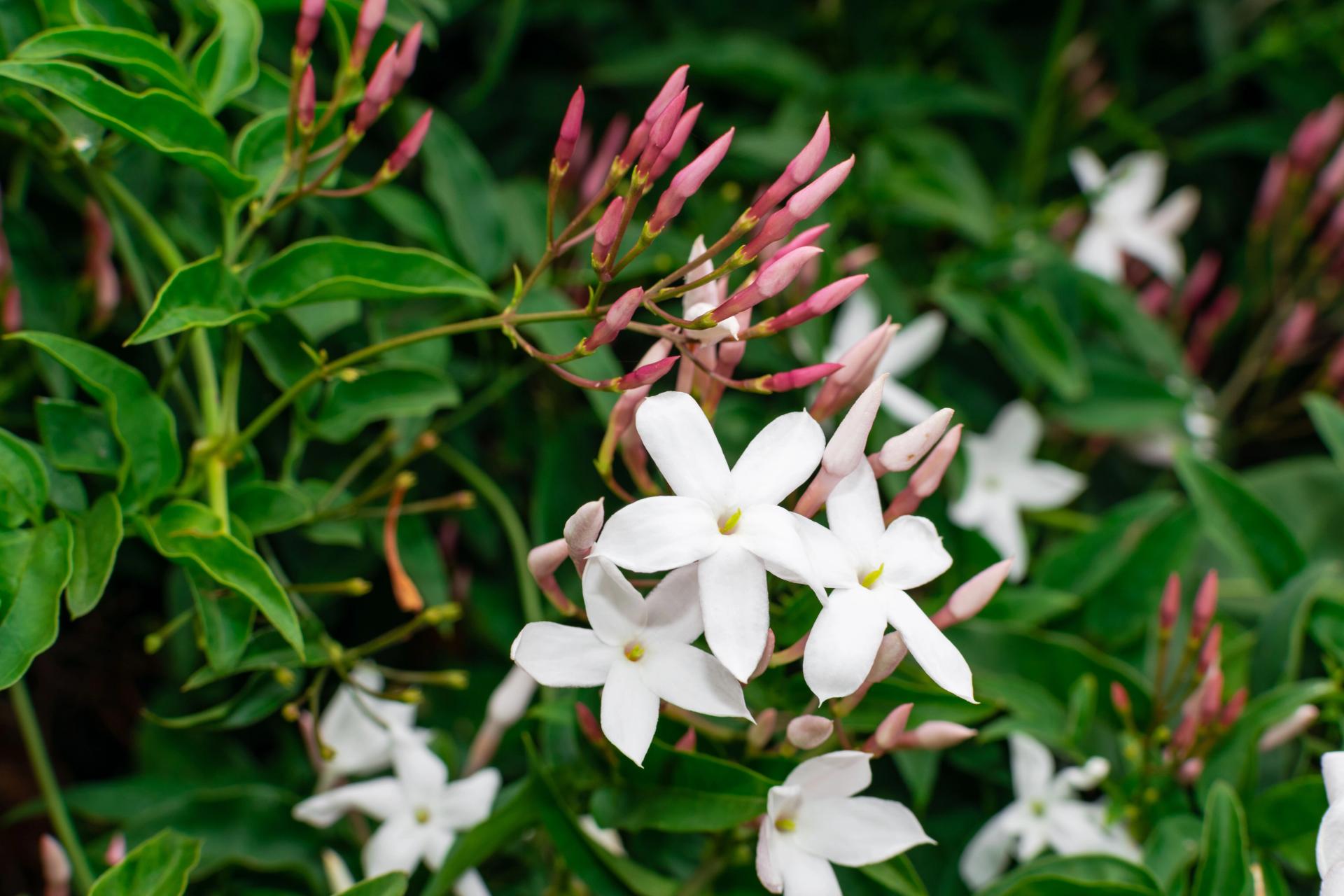
White Jasmine
Botanical Name: Jasminum polyanthum
Flower Colors: white
Light Requirements: full sun and partial sun
Blooming Season: late winter and spring
Size: 20-25 ft tall
Pay attention to White Jasmine if you are looking for a fragrant climbing flower. It is also often called Pink Jasmine. Its star-shaped flowers are white inside and of a gentle pink hue outside. It is perfect for placing outdoors, but you need to take it indoors during cold seasons. This plant is unproblematic and easy to take care of. But you need to remember that this vine needs means of support and requires regular watering every two weeks.
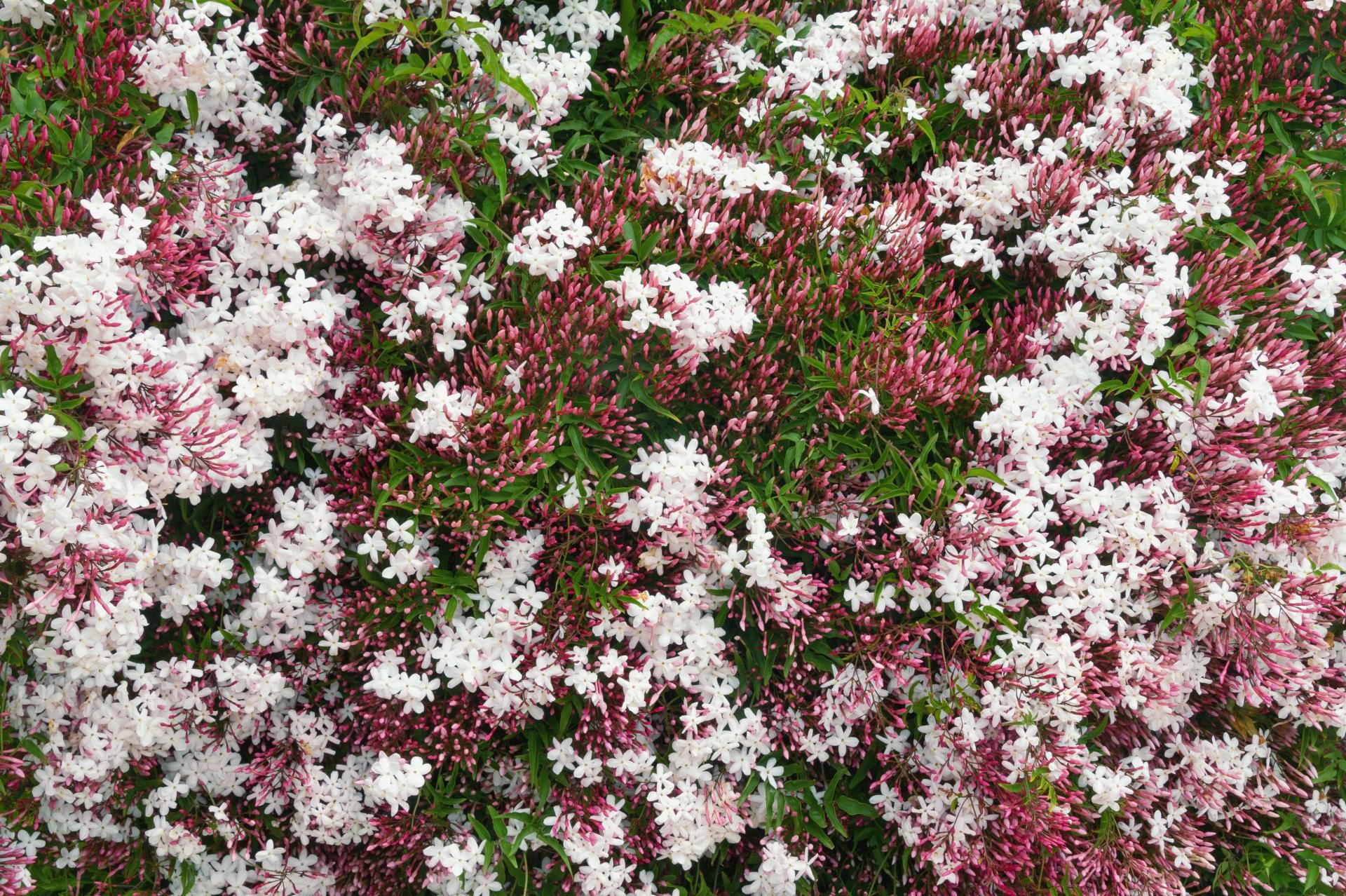
Royal Jasmine
Botanical Name: Jasminum grandiflorum
Flower Colors: white
Light Requirements: full to partial sun
Blooming Season: summer and fall
Size: 10-40 ft
As mentioned before, the Royal jasmine plant prefers full sun like many other species. Still, at the same time, it can survive in the shade, but it will affect its flowering. You need to keep the soil moist but without being soggy. Add compost to improve the soil's water-holding ability. Mulch also can be helpful in this case.

Italian Jasmine
Botanical Name: Jasminum humile
Flower Colors: yellow
Light Requirements: full to partial sun
Blooming Season: late spring-early summer
Size: 12-15 ft
This pretty flowering shrub attracts bees and hummingbirds during summer. And in the fall, flowers transform into dark-colored berries. May-June is the most productive period for flowering. This plant also grows very fast, of course, if you water it regularly. It сan reach its total height in five to ten years. Like many Jasmine varieties, this bush isn't hard to take care of, can tolerate dryness, and is resistant to pests. This species has somewhat different appearance than most other Jasmine shrubs, so don't hesitate to use our online identification tool if you're not sure.
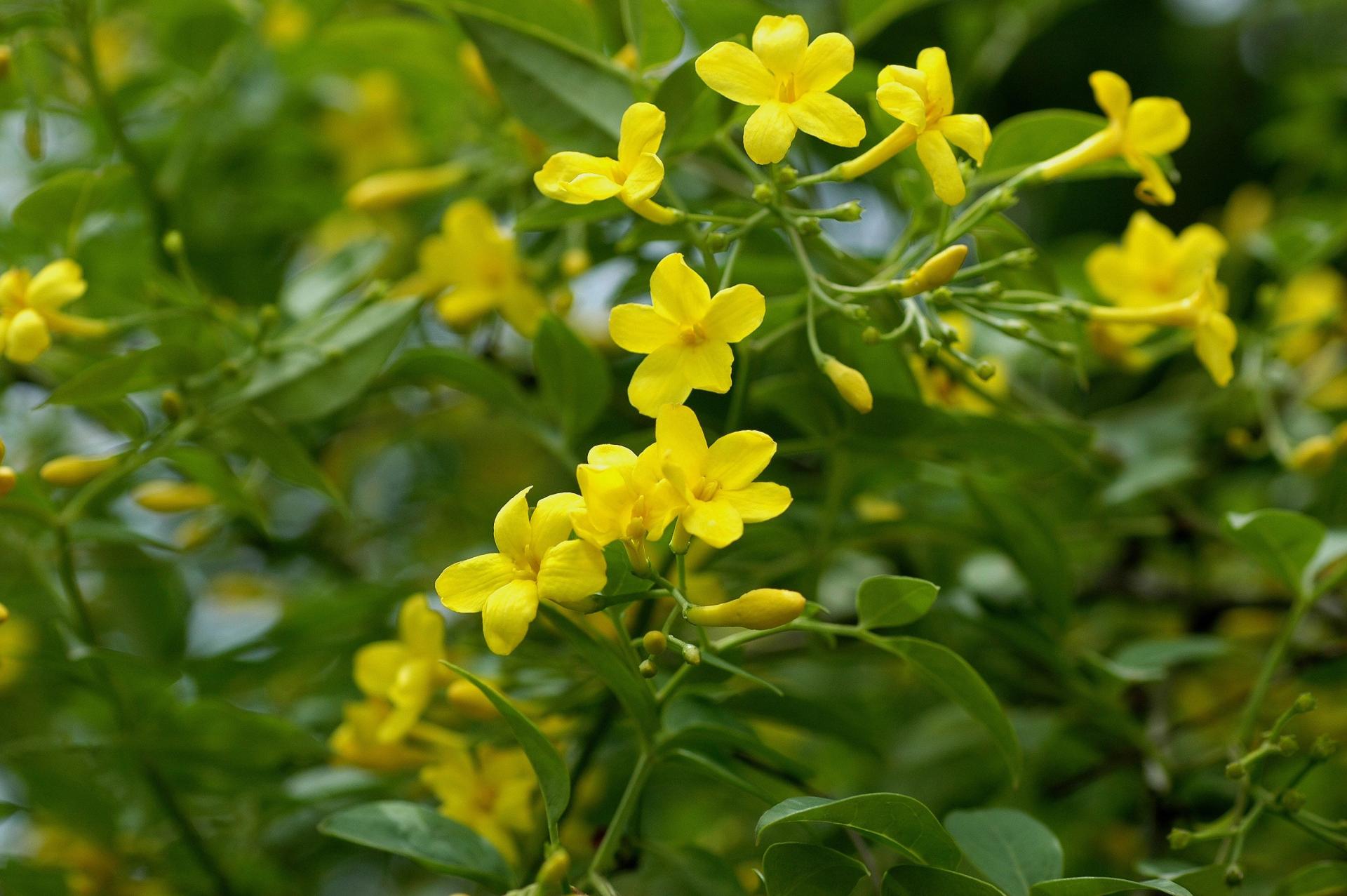
Arabian Jasmine
Botanical Name: Jasminum sambac
Flower Colors: white
Light Requirements: partial shade or full sun
Blooming Season: summer-fall
Size: 2-10 ft
If you like jasmine tea, you are already familiar with this species because this drink is made of it. This jasmine vine is widely appreciated in the Middle East and South-Eastern Asia. It's a national flower in the Philippines and Indonesia. This plant is deeply rooted in local traditions and has a double meaning in Indonesia. On the one hand, it's associated with life; hence it's often used in wedding decorations. On the other hand, it's also associated with death. In general, Jasminum sambac is not hard to take care of; just provide it with enough warmth and sun.
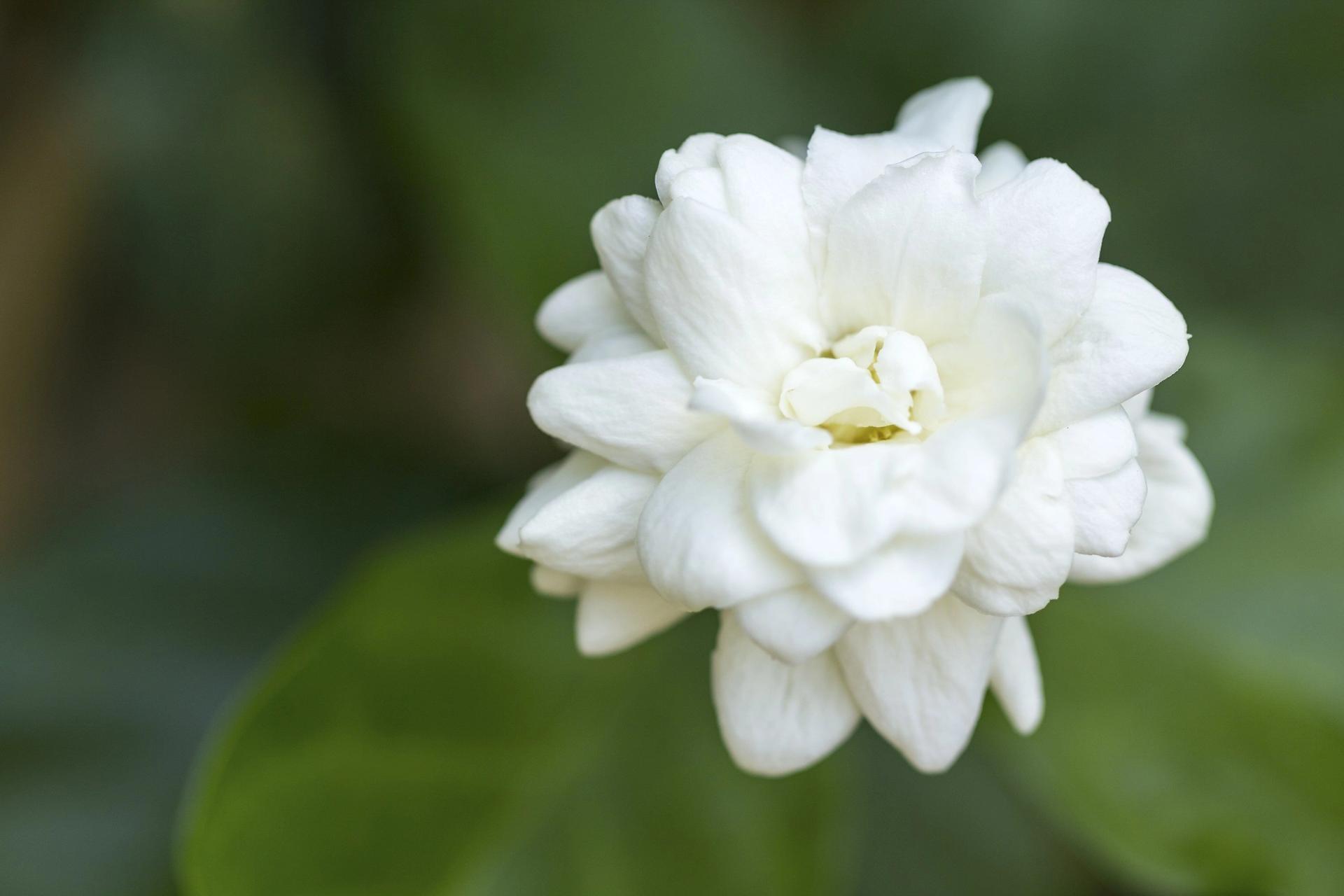
Angel Wing Jasmine
Botanical Name: Jasminum nitidum
Flower Colors: white with purple shade
Light Requirements: full sun or partial shade
Blooming Season: summer
Size: 15-20 ft tall
This evergreen Jasmine plant is an excellent addition to your apartment or terrace. You can place it literally anywhere or in anything because this plant is suitable for both pots and hanging baskets. It's not only pretty due to its flowers of attractive shape but also has a beautiful scent!
And as you can guess, it's easy to take care of. This trailing Jasmine just needs a lot of sunlight and slightly moist soil. During its maturing period, pay attention to regular watering. But when the root system is fully formed, there's no need to water it as often as before.
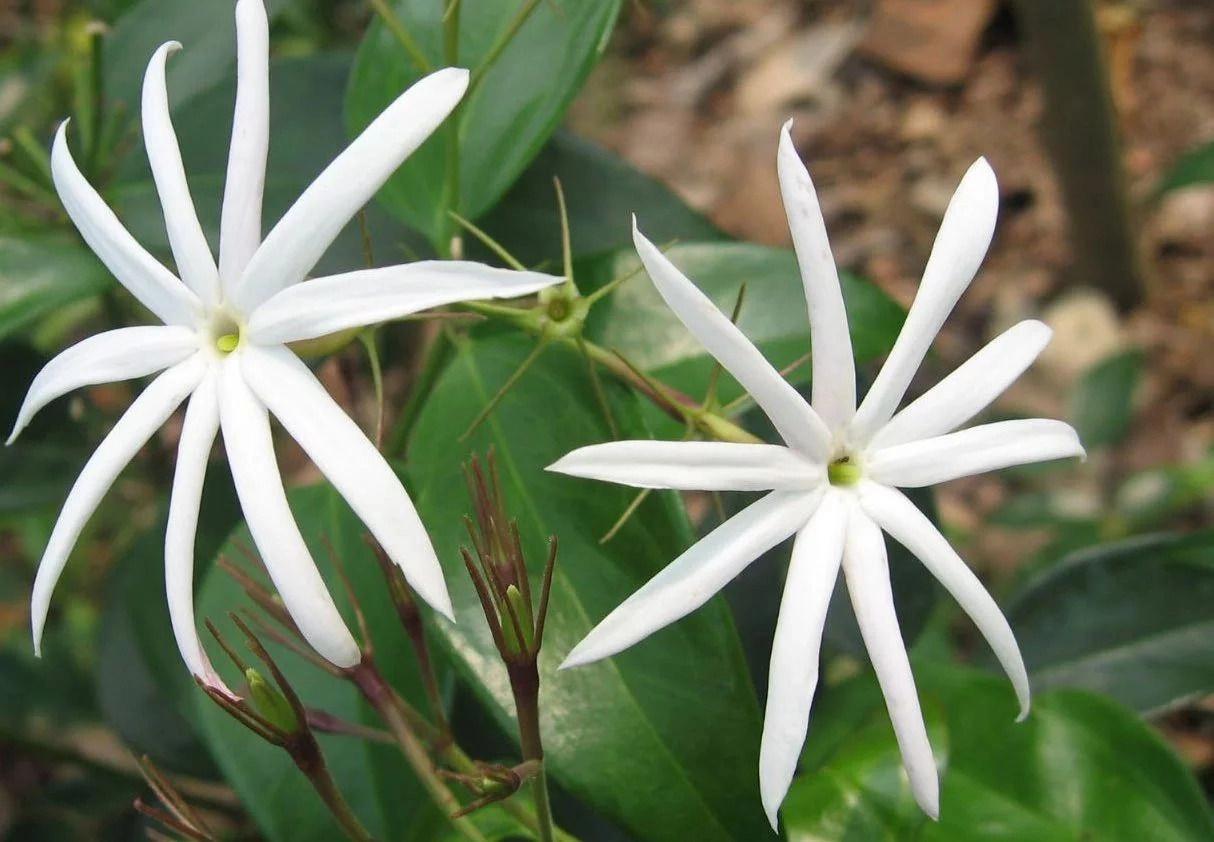
Star Jasmine
Botanical Name: Jasminum multiflorum
Flower Colors: white
Light Requirements: full sun
Blooming Season: winter
Size: 10 ft
There's a common phrase 'white as snow,' but in India, they say 'white as kunda' (the Indian name for this plant). This particular species often appears in Indian myths. It was sacred to Vishnu, one of the principal deities in Hinduism.
Star Jasmine is significant for wedding traditions in the state of Manipur. The bride adorns the groom with two Star Jasmine flowers. After that, the groom takes one of the flowers and gives it back to the bride. Compared to other Jasmine species, this one doesn't have a significant scent. This species needs a lot of water, especially during the blooming period. You need to keep the soil slightly moist but not soggy.
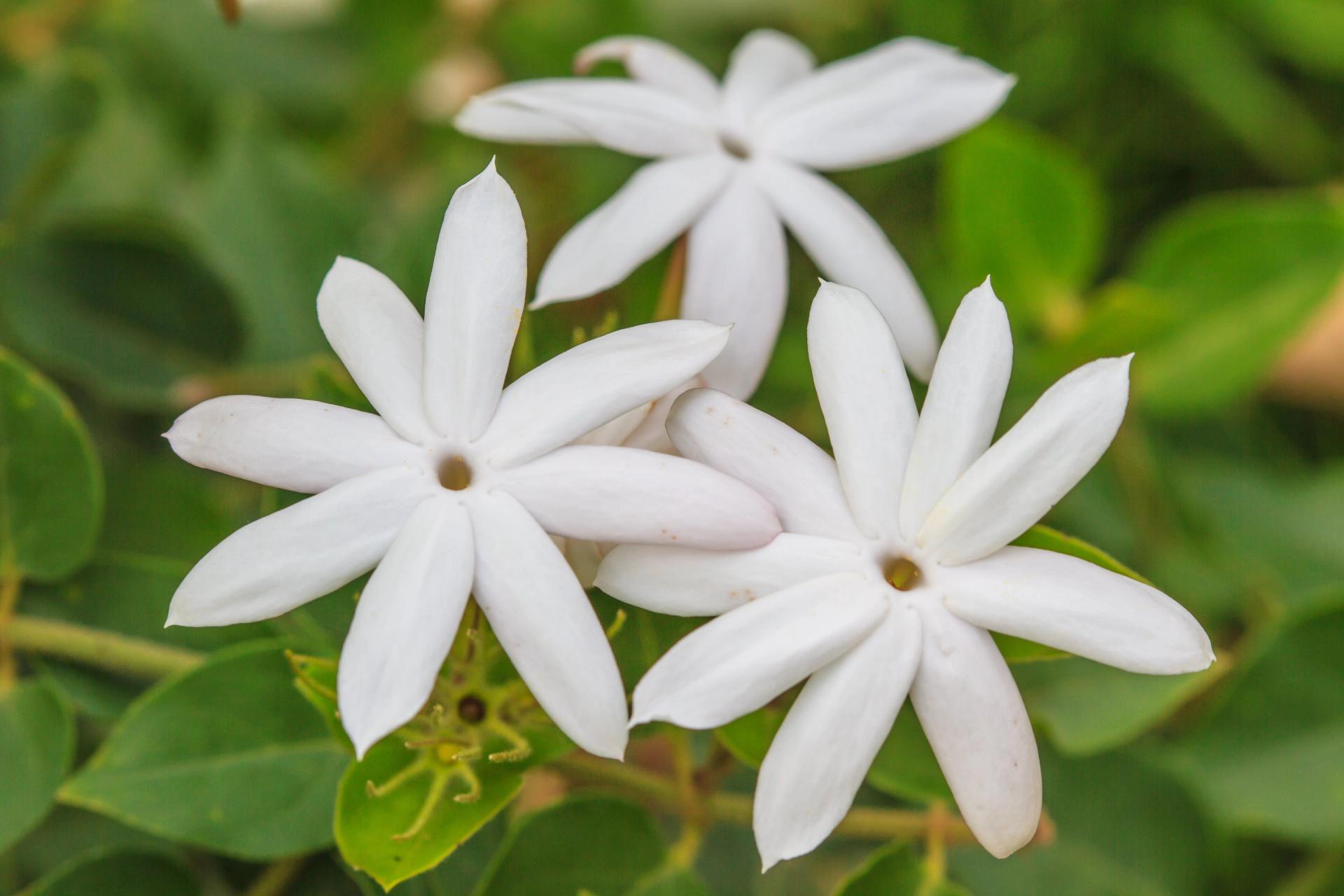
Lemon-Scented Jasmine
Botanical Name: Jasminum azoricum
Flower Colors: white
Light Requirements: full and partial sun
Blooming Season: late spring-late autumn
Size: 10-12 ft
Despite the name, the scent of this species is not so notable, but still, it's enchanting. And if you want to experience its fragrance at its fullest, smell it at the sunset when the fragrance is released at its highest levels. This type of Jasmine is native to Madeira island (Portugal), so as you can guess, this plant needs a lot of warmth and sun. If you decide to become an owner of such a plant, remember to avoid the frosts. And choose fertile and rich soil for Lemon-scented Jasmine. It also should be well-draining and slightly moist. Unfortunately, this type of Jasmine is now extremely rare in nature.

Wild Jasmine
Botanical Name: Jasminum angular
Flower Colors: white
Light Requirements: full or partial sun
Blooming Season: fall-winter
Size: 8-10 ft
Wild Jasmine is one of the Jasmine varieties that have a lovely fragrance. This plant is hardy and can tolerate droughts. Well-drained and fertile soil (with loam and compost) is suitable for this plant. Despite being a sun-loving plant, a little shade, especially in hot summer, can benefit the Wild Jasmine.
Moreover, it has antidepressant qualities! So there's a reason this plant is used in traditional medicine for helping with irritability, anxiety, and headaches. Unexpectedly, it is also used as an aphrodisiac.
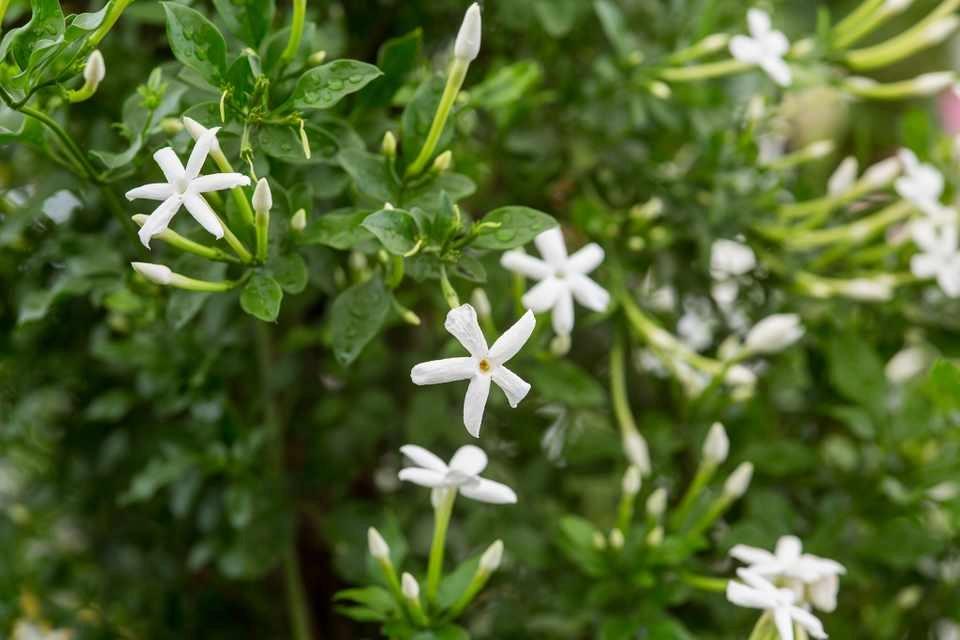
Primrose Jasmine
Botanical Name: Jasminum mesnyi
Flower Colors: yellow
Light Requirements: full or partial sun
Blooming Season: spring
Size: 6-12 ft
Japanese Jasmine has flowers of soft yellow color. It's not frost-tolerant since it's native to the warm climates of Vietnam and Southern China. That's why this cultivar is popular in Central and South America. This plant tends to grow big, so it's better to prune it often to keep the size in control. Also, keep in mind its potential size when choosing a location for this plant. In general, Primrose Jasmine is very suitable for gardens or patios due to its fast growth.
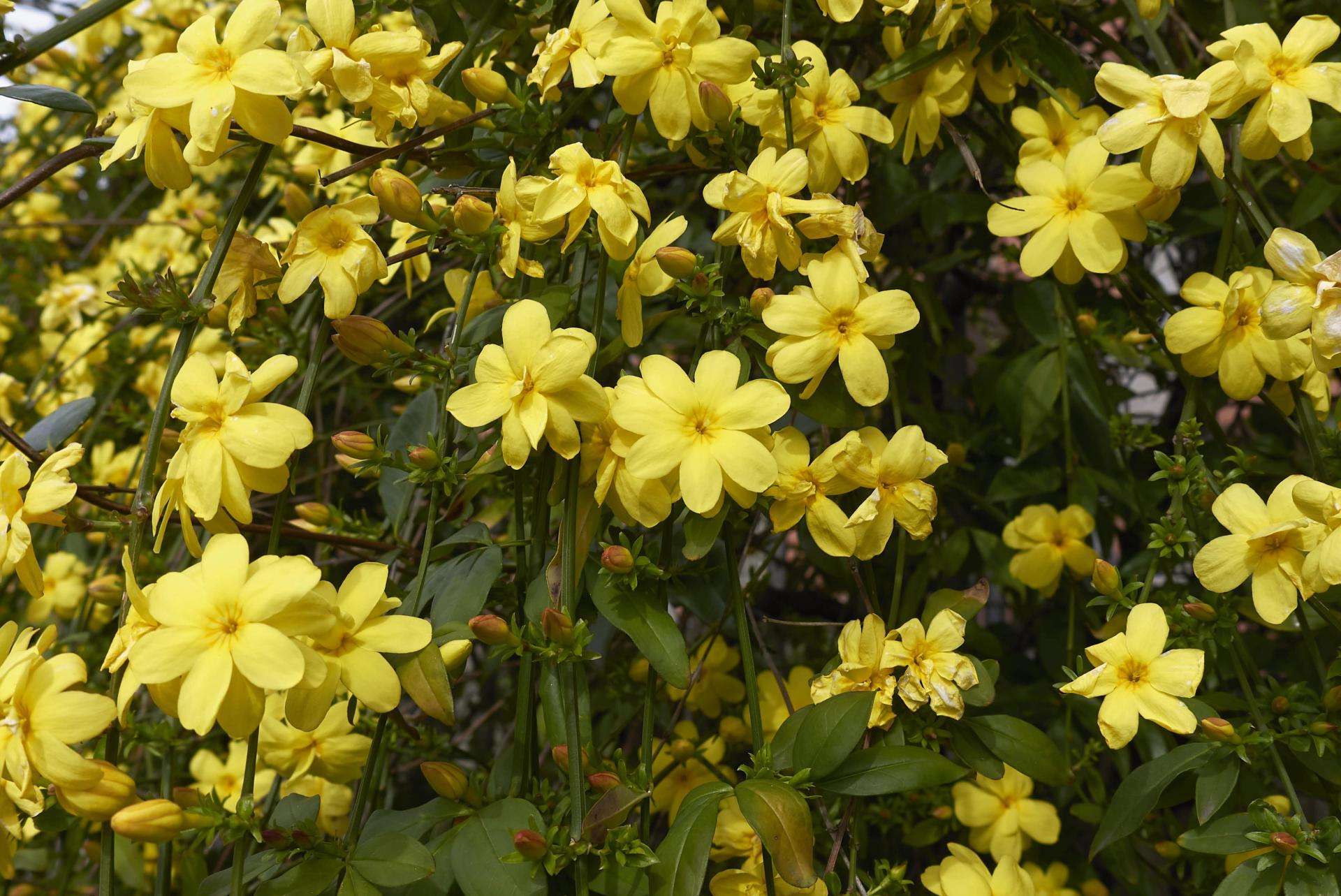
Winter Jasmine
Botanical Name: Jasminum nudiflorum
Flower Colors: yellow
Light Requirements: full or partial sun
Blooming Season: winter
Size: 4-15 ft
This plant is native to China, and its Chinese name, Yingchun, means 'the flower that welcomes spring.' It blooms in winter, and it is a reminder that a warmer season is coming. And it's popular not only in China but in the rest of the world. Compared to other Jasmines, this one is especially unusual due to its look. Because Jasmines are primarily vines, Winter Jasmine, in its turn, grows vertical and doesn't twine. And also, this variety isn't fragrant at all.

Jasmine Plant Benefits
- Helps with insomnia. Japanese scientists prove that the sedative effects of this flower are helpful in sleep. For a reason, jasmine tea is often recommended if you are nervous because of its calming abilities. Growing this plant indoors, especially in the bedroom, can affect your sleep in a good way!
- It can help with anxiety. Jasmine fragrance can relieve stress and make you generally calmer. We have mentioned already that certain species, such as Wild Jasmine, are primarily known for their relaxing abilities.
- Cure for headaches. If you suffer from headaches often, you may need to consider growing this plant indoors! Jasmine's fragrance is proved to be beneficial for such kind of pain.
- Ease period cramps. If your periods are painful, jasmine oil can help with this issue. Just rub the oil on the lower abs during this time. Jasmine aromatherapy is also helpful with this type of pain.
- It's an excellent air purifier. Many plants are known for cleaning the air, and jasmine is not an exception. And it does not only purify the air but also eliminates all unpleasant smells.
FAQ
What Are the Most Fragrant Types of Jasmine Flowers?
The common Jasmine is considered the most fragrant Jasmine. Angel wing Jasmine, Wild Jasmine, Arabian Jasmine, and Lemon-scented Jasmine are all known for their scent. However, many Jasmine varieties have a discreet scent or don't have it.
Is Jasmine Evergreen?
Yes, these flowers are evergreen, so that you can enjoy their lush greenery all year round.
Which Is the Best Type of Jasmine?
It depends on what you are looking for in this plant. If you want fragrant flowers, then pay attention to the scented varieties. Winter jasmine isn't for you if you're going to cover a wall in flowers because it grows vertically.
Can Jasmine Be Grown Indoors?
Yes, jasmine can grow well indoors, especially types like Chinese jasmine (Jasminum polyanthum) and Arabian jasmine (Jasminum sambac). They just need bright light, good airflow, and regular watering.
Share this article in your social media if you found it useful. Also, what is your favorite Jasmine type? Let us know in the comments!
